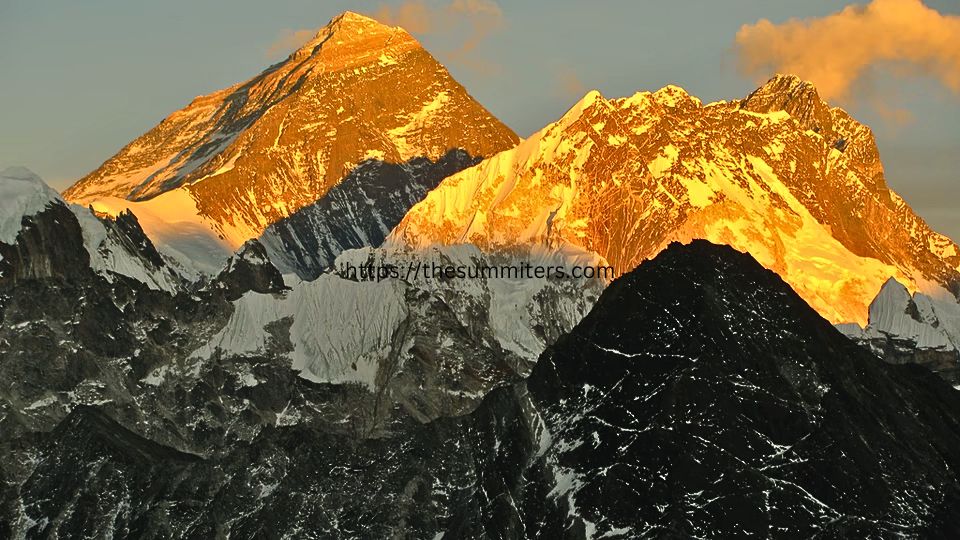Mount Everest has some serious troubles. The highest glacier on the planet sitting atop this towering mountain is disappearing fast because things are heating up mainly due to how humans are changing the climate.

This glacier known as the South Col Glacier used to have a thick blanket of snow on top. That snow was like a shield protecting the ice below from the sun’s heat. But now most of that snow has melted away. This has left the ice exposed and is causing it to shrink really quickly.
Scientists took a good look at a 10-meter-long piece of ice from this glacier. They also gathered info from weather stations satellites and old records. What they discovered is worrying: since the 1990s, the South Col Glacier has become half its original size and the ice part has thinned by about 55 meters (that’s as tall as an 18-story building!). Why? It’s because it’s been getting warmer less humid and the winds have gotten stronger. They shared this study in a science journal called Climate and Atmospheric Science.
The researchers are saying that losing the snow cover on the glacier is a big deal. It’s like a warning that the balance keeping these high mountain glaciers safe is in danger. Basically they’re saying Even Mount Everest the highest spot on Earth is feeling the heat because of what people are doing to the climate.
This melting glacier is not just bad news for the mountain itself. It’s really concerning for more than 200 million people who rely on water from these melting glaciers in Asia’s high mountains. And for climbers aiming to conquer Everest things are getting tougher. More melting means more avalanches and climbers are facing less ice and more hard rock making the climb more difficult.
It does not look good for the future either, the weather forecasts for the Himalayas predict that it’s going to keep getting warmer and these glaciers will just keep on melting.
Factors | Climate Change
Melting Glaciers: A Ticking Time Bomb
The Khumbu Glacier, vital for accessing Everest, is losing approximately 2 meters of ice thickness every year. Beyond a mere reduction in size, this rapid melting unveils hidden crevasses, turning the icefalls more unstable and elevating the risk of avalanches and rockfall. As the ice recedes, bare rock surfaces become vulnerable to erosion, creating loose debris that poses dangers for climbers navigating these treacherous sections.
Moreover, the disappearance of natural ice bridges over crevasses forces climbers to rely on ladders and ropes, adding complexity and risk, especially during adverse weather conditions.
Unpredictable Weather: A Game of Roulette
The once reliable weather patterns are transforming. The jet stream winds crucial for offering a stable window for summit attempts are becoming erratic. This unpredictability shortens the safe timeframe for climbs compelling climbers to rush their ascents before sudden storms strike heightening the dangers they face.
Warm temperatures destabilize the snowpack, unexpectedly increasing the frequency and unpredictability of avalanches. Extreme weather events such as high winds thunderstorms and lightning storms have become more frequent pretending immediate threats to climbers caught in these serious conditions.
Rising Sea Levels: Far-Reaching Impacts
While Everest stands far from the sea its melting glaciers contribute to rising sea levels. Though not directly impacting the summit downstream regions face the looming threat of floods impacting lives agriculture and tourism.
The cultural heritage nestled near the Himalayas is also at risk. Historical sites and artifacts face submersion due to rising water levels threatening the rich heritage of the region.
Beyond the Challenges: A Glimmer of Hope
Efforts to adopt to these changing conditions are underway. Climbers and organizers are exploring advanced forecasting methods developing more resilient equipment and revising climbing routes to ensure safer expeditions.
Investing in local communities through sustainable tourism initiatives and educational programs empowers them to adapt and find alternative livelihoods. These initiatives build resilience and foster conservation efforts.
However, the real solution lies in global climate action. Addressing the root cause necessitates collective efforts worldwide. Decrease of greenhouses discharge of gases and transition to renewable energy sources are mandatory to ease the long term impacts not only on Everest but on all vulnerable ecosystems globally.
Mount Everest is respected for its breath-taking beauty and terrifying challenge, now stands as a impressive reminder of the urgent need for global action to safeguard our planet’s brittle ecosystems and cultural treasures.